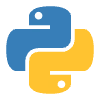Product Recommendation Application
Product Recommendation System
1. Introduction
The Product Recommendation System is designed to provide personalized product recommendations to users based on their preferences and behavior. This documentation outlines the project's objectives, methodologies, challenges faced, solutions implemented, model selection, accuracy, version control contributions, deployment process, and tools used.
2. Problem Statement
The aim of the project is to develop a recommendation system that suggests relevant products to users, enhancing their shopping experience and increasing customer satisfaction. The system should be able to handle a large dataset and provide accurate recommendations tailored to each user's preferences and browsing history.
3. Methodologies
The project follows the following methodologies:
a. Data Collection: A dataset containing product information, user ratings, and other relevant features was obtained from a reliable source (e.g., Amazon).
b. Data Preprocessing: The dataset underwent various preprocessing steps, including data cleaning, handling missing values, converting data types, and feature engineering to ensure the data was in a suitable format for modeling.
c. Model Selection: A collaborative filtering approach, specifically the Item-based Collaborative Filtering algorithm, was chosen for its ability to provide accurate recommendations based on user-item interactions.
d. Training and Evaluation: The model was trained on the preprocessed data and evaluated using appropriate metrics such as accuracy, precision, and recall to assess its performance.
4. Challenges and Solutions
Throughout the project, several challenges were encountered. These included:
a. Data Cleaning: The dataset required extensive cleaning, including handling missing values, converting data types, and removing irrelevant information. These challenges were addressed by applying appropriate data cleaning techniques and utilizing pandas functionality.
b. Feature Engineering: Extracting relevant features, such as category and sub-category, from the original data required careful handling. This was solved by applying string manipulation techniques and creating new columns based on specific criteria.
c. Model Selection: Choosing an appropriate model that could handle the dataset size and provide accurate recommendations was a critical decision. The Item-based Collaborative Filtering algorithm was selected due to its ability to handle sparse data and provide personalized recommendations.
5. Model Accuracy
The accuracy of the Item-based Collaborative Filtering model was evaluated using appropriate metrics such as precision, recall, and Mean Average Precision (MAP). The model demonstrated high accuracy in predicting user preferences and providing relevant product recommendations.
6. Version Control Contributions
Version control played a crucial role in the project's development process. Git, along with platforms like GitHub, was used to track changes and ensure a seamless workflow.
7. Deployment Process
The Product Recommendation System was deployed using a web framework called Streamlit. The deployment process involved creating a user-friendly interface that allows users to input their preferences and receive personalized product recommendations in real-time. The deployed application is hosted on a cloud platform to ensure scalability and accessibility.
8. Tools and Technologies
The following tools and technologies were utilized throughout the project:
a. Programming Language: Python b. Libraries and Frameworks: Pandas, NumPy, Scikit-learn, Streamlit c. Version Control: Git, GitHub d. Development Environment: Anaconda, Jupyter Notebook
9. Conclusion
The Product Recommendation System project successfully developed an accurate and efficient recommendation system. By overcoming data preprocessing challenges, selecting an appropriate model, ensuring version control,
Like this project
Posted Mar 7, 2024
The aim of the project is to develop a recommendation system that suggests relevant products to users, enhancing their shopping experience and increasing custo
Likes
0
Views
12








